La temporada de migración del 2015 en el Darién estuvo llena de sorpresas y como se podría esperar en un año en que El Niño estaba impactando ecosistemas alrededor del globo, pocas especies siguieron los patrones de años anteriores. Entonces, para empezar este resumen de las capturas en la estación de anillamiento, vale la pena mencionar que el número total de capturas (2,364) rompió el record del 2014 (2,272). Este aumento se puede explicar en parte por la adición de una nueva, y muy exitosa, red de dosel, que incrementó las capturas de especies como Vireo olivaceus, Setophaga petechia y Oreothlypis peregrina. Sin embargo, para otras especies con un total record de capturas, como Catharus ustulatus y Catharus fuscescens, otros factores probablemente explican estas alzas, como una temporada de reproducción productiva o una reducción en la tasa de mortalidad durante la migración. Se destaca que varias especies de preocupación para las conservación tuvieron su mejor año (ej. Vermivora chrysoptera y Setophaga cerulea) o fueron capturadas por primera vez (ej. Contopus cooperi). Otras capturas notables, incluyeron las primeras dos Setophaga striata anilladas en la Reserva Tacarcuna, un Helmitheros vermivorum, un Seiurus aurocapillus y un Geothlypis formosus.
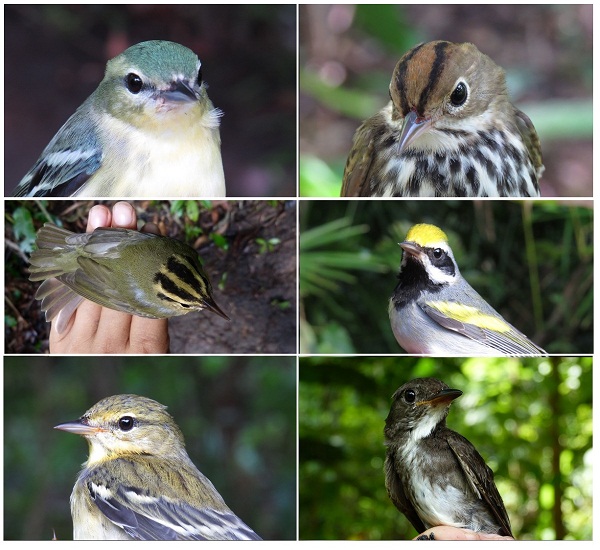
No todas las especies tuvieron un buen año y particularmente los atrapamoscas como grupo fueron mucho menos numerosos que en otros años, igual que varias reinitas, como Geothlypis philadelphia y Cardellina canadensis. Estas dos reinitas y los atrapamoscas Empidonax en particular, toman una ruta migratoria que pasa alrededor del Golfo de México cruzando por México y Centroamérica. Es posible que el efecto secador de El Niño redujera los recursos alimenticios disponibles a lo largo de esta ruta, impactando la sobrevivencia de estas especies. Igual, podría estar asociado a factores en los sitios de reproducción que influyeron en la productividad de los atrapamoscas.
Cómo la variación en las condiciones experimentadas durante la migración afectan la sobrevivencia de las aves es todavía un tema poco explorado y además desconocemos qué tanto los cambios en los sitios usados durante la migración pueden estar contribuyendo a las disminuciones poblacionales de muchas especies.
Finalmente, queremos agradecer al equipo excelente de anilladores este año que incluyó a Angela Caguazango, Marta Rubio, Laura Cárdenas y Nick Bayly, y a la Reserva Tacarcuna por abrir su puerta a los investigadores de SELVA y finalmente al concejo comunitario menor de Sapzurro y al concejo comunitario mayor del norte de Acandí, COCOMANORTE, por apoyar este proyecto.
Tabla 1. Número de capturas de 34 especies de aves migratorias en la Reserva Tacarcuna, Sapzurro, Colombia, entre 11 septiembre y el 3 noviembre 2015 / Number of captures of 34 species of migratory birds in the Tacarcuna Reserve, Sapzurro, Colombia between the 11th Sep and 3rd Nov 2015.
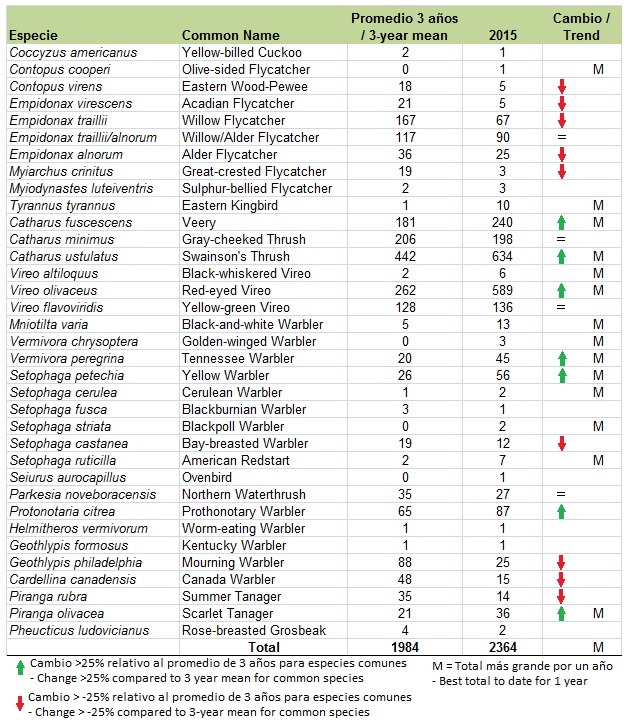
English: The 2015 fall migration season in the Darién was full of surprises and as might be expected in a year in which the El Niño phenomenon was impacting ecosystems across the globe, few species followed the pattern of previous years. So to begin this summary for the banding/ringing station, it is worth noting that the total number of captures set a new record (2,364), beating the record set last year (2,272). This increase may be explained in part by the addition of a new and very successful canopy net, which also likely explains the increase in species such as Red-eyed Vireo, Yellow Warbler and Tennessee Warbler. However, for other species that had their best year to date, such as Swainson’s Thrush and Veery, it is likely that other factors such as a productive breeding season, or reduced mortality during migration, might explain the increase in numbers. It is noteworthy that several species of concern had their best year yet (e.g. Golden-winged and Cerulean Warbler) or were captured for the first time (e.g. Olive-sided Flycatcher). Other highlights involving rare species included the first two Blackpoll Warblers to be captured in the Tacarcuna reserve, a Worm-eating Warbler, an Ovenbird and a Kentucky Warbler.
Not all species had a good year and it is notable that the flycatchers as a group showed markedly lower abundances compared to other years, as did several warblers, including Mourning Warbler and Canada Warbler. The latter two warblers and the Empidonax flycatchers, in particular, favor a migration route that circumvents the Gulf of Mexico taking birds overland through Mexico and Central America. It is tempting to speculate that the drying effect of the El Niño reduced food supplies along this route and may have affected the survival of these species. Equally, factors on the breeding grounds may have been responsible, reducing food supplies for flycatching species.
How varying conditions affect the survival of birds during migration remains largely unexplored and we still have much to learn regarding how changes at sites used on migration may be driving population declines.
Finally we would like to thank our excellent team of bird banders, including Angela Caguazango, Marta Rubio, Laura Cárdenas and Nick Bayly, as well as the Tacarcuna Reserve in Sapzurro for opening their doors to this research project, and to the community councils of Sapzurro and Acandí North (COCOMANORTE).

Redes de dosel, Reserva Tacarcuna, Sapzurro – Canopy nets, Tacarcuna Reserve, Sapzurro




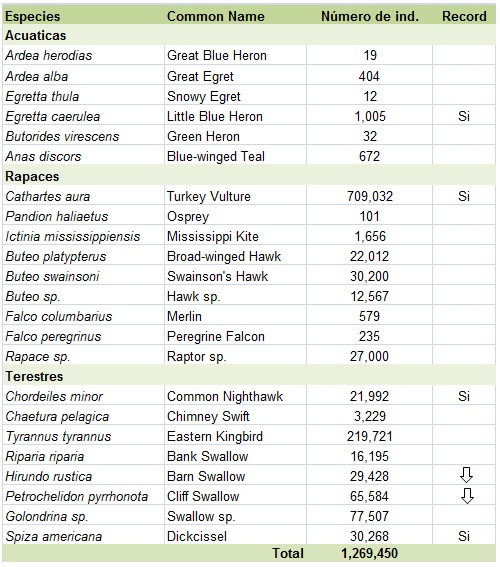

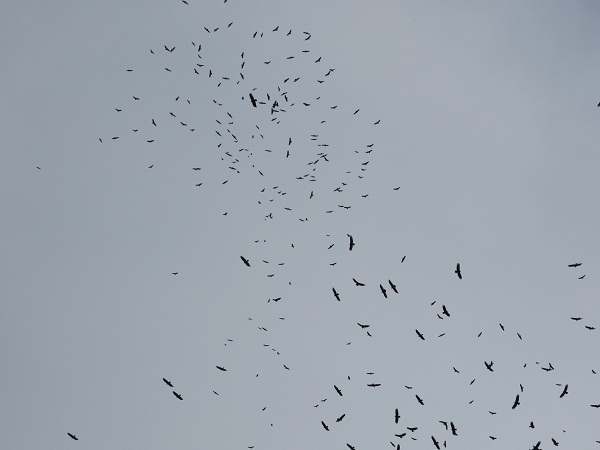


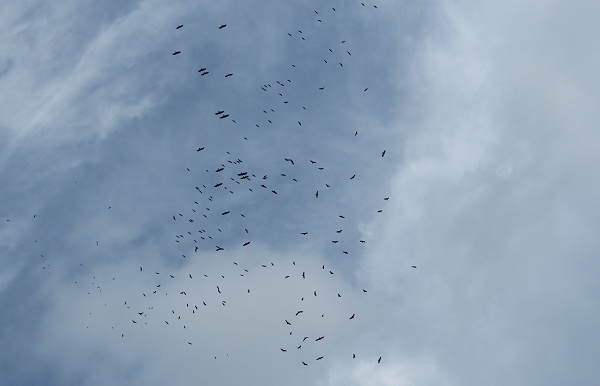
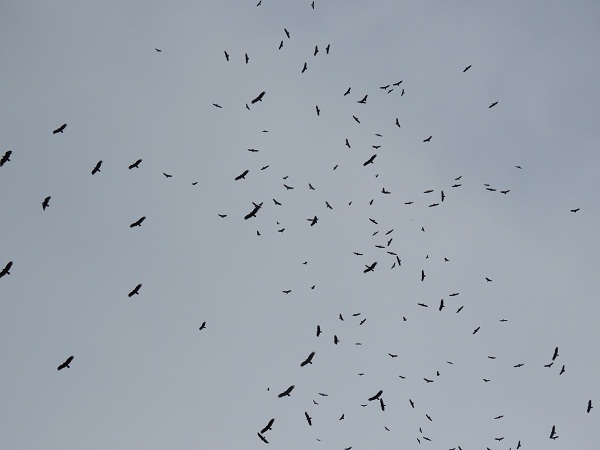




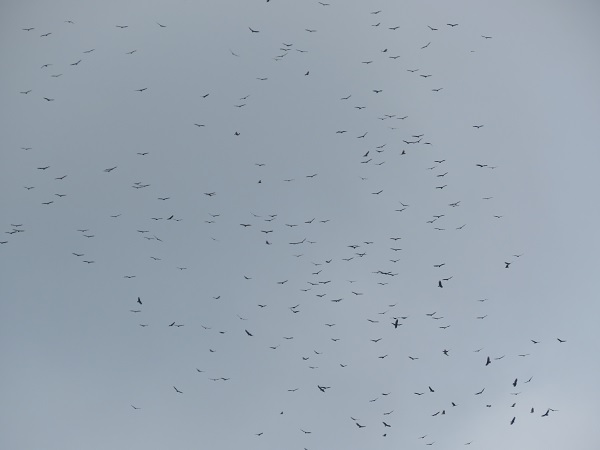

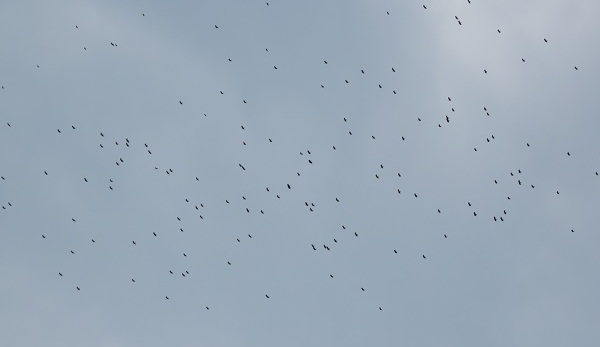
Debe estar conectado para enviar un comentario.